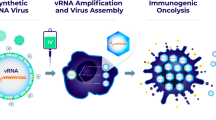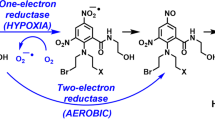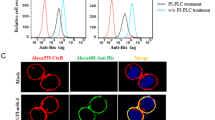Abstract
Use of synthetic vectors to deliver genomes of conditionally replicating lytic viruses combines the strengths of viral and non-viral approaches by enabling neutralising antibody resistant deployment of cancer virotherapy. Adenovirus is particularly suitable for this application since all proteins essential for replication can be expressed from the input DNA, although the presence of terminal protein (TP) covalently linked to the 5′ termini of the input virus genomes both improves expression of transgenes encoded in the input DNA and also enhances replication. These roles of TP were distinguished in experiments where E1-deleted AdGFPDNA bearing TP (AdGFPDNA-TP), delivered with DOTAP, gave a two-fold greater frequency of transduction than AdGFPDNA(without TP) in non-complementing A549 cells, while in 293 cells (which support replication of E1-deleted viruses) the presence of TP mediated a much greater differential transgene expression, commensurate with its ability to promote replication. Subsequent studies using AdDNA for virotherapy, therefore, included covalently linked TP. AdDNA-TP delivered to A549 cells using a synthetic polyplex vector was shown to be resistant to levels of neutralising antisera that completely ablated infection by wild-type adenovirus, enabling polyplex/Adwild typeDNA-TP to mediate a powerful cytopathic effect. Similarly in vivo, direct injection of a polyplex/Adwild typeDNA-TP into A549 tumours was neutralising antibody-resistant and enabled virus replication, whereas intact virus was neutralised by the antibody and failed to infect. The delivery of adenovirus genomes–TP using synthetic vectors should provide a strategy to bypass neutralising antibodies and facilitate clinical application of replicating adenovirus for cancer virotherapy.
This is a preview of subscription content, access via your institution
Access options
Subscribe to this journal
Receive 12 print issues and online access
$259.00 per year
only $21.58 per issue
Buy this article
- Purchase on Springer Link
- Instant access to full article PDF
Prices may be subject to local taxes which are calculated during checkout






Similar content being viewed by others
References
Niculescu-Duvaz I, Cooper RG, Stribbling SM, Heyes JA, Metcalfe JA, Springer CJ . Recent developments in gene-directed enzyme prodrug therapy (GDEPARTMENT) for cancer. Curr Opin Mol Ther 1999; 1: 480–486.
Kirn D . Replication-selective oncolytic adenoviruses: virotherapy aimed at genetic targets in cancer. Oncogene 2000; 19: 6660–6669.
Nettelbeck DM . Virotherapeutics: conditionally replicative adenoviruses for viral oncolysis. Anticancer Drugs 2003; 14: 577–584.
Post DE, Khuri FR, Simons JW, Van Meir EG . Replicative oncolytic adenoviruses in multimodal cancer regimens. Hum Gene Ther 2003; 14: 933–946.
Kirn D . Oncolytic virotherapy for cancer with the adenovirus dl1520 (Onyx-015): results of phase I and II trials. Expert Opin Biol Ther 2001; 1: 525–538.
Aghi M, Martuza RL . Oncolytic viral therapies – the clinical experience. Oncogene 2005; 24: 7802–7816.
Barzon L, Zanusso M, Colombo F, Palu G . Clinical trials of gene therapy, virotherapy, and immunotherapy for malignant gliomas. Cancer Gene Ther 2006; 13: 539–554.
Sprangers MC, Lakhai W, Koudstaal W, Verhoeven M, Koel BF, Vogels R et al. Quantifying adenovirus-neutralizing antibodies by luciferase transgene detection: addressing preexisting immunity to vaccine and gene therapy vectors. J Clin Microbiol 2003; 41: 5046–5052.
Christ M, Lusky M, Stoeckel F, Dreyer D, Dieterle A, Michou AI et al. Gene therapy with recombinant adenovirus vectors: evaluation of the host immune response. Immunol Lett 1997; 57: 19–25.
Stallwood Y, Fisher KD, Gallimore PH, Mautner V . Neutralisation of adenovirus infectivity by ascitic fluid from ovarian cancer patients. Gene Therapy 2000; 7: 637–643.
Fisher KD, Stallwood Y, Green NK, Ulbrich K, Mautner V, Seymour LW . Polymer-coated adenovirus permits efficient retargeting and evades neutralising antibodies. Gene Therapy 2001; 8: 341–348.
Green NK, Herbert CW, Hale SJ, Hale AB, Mautner V, Harkins R et al. Extended plasma circulation time and decreased toxicity of polymer-coated adenovirus. Gene Therapy 2004; 11: 1256–1263.
Kreppel F, Gackowski J, Schmidt E, Kochanek S . Combined genetic and chemical capsid modifications enable flexible and efficient de- and retargeting of adenovirus vectors. Mol Ther 2005; 12: 107–117.
Romanczuk H, Galer CE, Zabner J, Barsomian G, Wadsworth SC, O'Riordan CR . Modification of an adenoviral vector with biologically selected peptides: a novel strategy for gene delivery to cells of choice. Hum Gene Ther 1999; 10: 2615–2626.
Oupicky D, Ogris M, Howard KA, Dash PR, Ulbrich K, Seymour LW . Importance of lateral and steric stabilization of polyelectrolyte gene delivery vectors for extended systemic circulation. Mol Ther 2002; 5: 463–472.
Fisher KD, Ulbrich K, Subr V, Ward CM, Mautner V, Blakey D et al. A versatile system for receptor-mediated gene delivery permits increased entry of DNA into target cells, enhanced delivery to the nucleus and elevated rates of transgene expression. Gene Therapy 2000; 7: 1337–1343.
Carlisle RC, Etrych T, Briggs SS, Preece JA, Ulbrich K, Seymour LW . Polymer-coated polyethylenimine/DNA complexes designed for triggered activation by intracellular reduction. J Gene Med 2004; 6: 337–344.
Desiderio SV, Kelly Jr TJ . Structure of the linkage between adenovirus DNA and the 55 000 molecular weight terminal protein. J Mol Biol 1981; 145: 319–337.
Pronk R, van der Vliet PC . The adenovirus terminal protein influences binding of replication proteins and changes the origin structure. Nucleic Acids Res 1993; 21: 2293–2300.
Pronk R, Stuiver MH, van der Vliet PC . Adenovirus DNA replication: the function of the covalently bound terminal protein. Chromosoma 1992; 102: S39–S45.
Angeletti PC, Engler JA . Adenovirus preterminal protein binds to the CAD enzyme at active sites of viral DNA replication on the nuclear matrix. J Virol 1998; 72: 2896–2904.
Schaack J, Ho WY, Freimuth P, Shenk T . Adenovirus terminal protein mediates both nuclear matrix association and efficient transcription of adenovirus DNA. Genes Dev 1990; 4: 1197–1208.
Schaack J, Shenk T . Adenovirus terminal protein mediates efficient and timely activation of viral transcription. Curr Top Microbiol Immunol 1989; 144: 185–190.
Webster A, Leith IR, Nicholson J, Hounsell J, Hay RT . Role of preterminal protein processing in adenovirus replication. J Virol 1997; 71: 6381–6389.
Sharp PA, Moore C, Haverty JL . The infectivity of adenovirus 5 DNA-protein complex. Virology 1976; 75: 442–456.
Lieber A, Kay MA, Li ZY . Nuclear import of moloney murine leukemia virus DNA mediated by adenovirus preterminal protein is not sufficient for efficient retroviral transduction in nondividing cells. J Virol 2000; 74: 721–734.
Fredman JN, Engler JA . Adenovirus precursor to terminal protein interacts with the nuclear matrix in vivo and in vitro. J Virol 1993; 67: 3384–3395.
Briggs SS, Carlisle RC, Ulbrich K, Preece JA, Seymour LW . Bio-reversible polymer coating for improved circulation kinetics of transfection active non-viral vectors. European Society for Gene Therapy, Prague, November 2005; Poster 156: 83.
Nemunaitis J, Ganly I, Khuri F, Arseneau J, Kuhn J, McCarty T et al. Selective replication and oncolysis in p53 mutant tumors with ONYX-015, an E1B-55 kD gene-deleted adenovirus, in patients with advanced head and neck cancer: a phase II trial. Cancer Res 2000; 60: 6359–6366.
Oupicky D, Ogris M, Seymour LW . Development of long-circulating polyelectrolyte complexes for systemic delivery of genes. J Drug Target 2002; 10: 93–98.
Matsumura Y, Maeda H . A new concept for macromolecular therapeutics in cancer chemotherapy: mechanism of tumoritropic accumulation of proteins and the antitumor agent smancs. Cancer Res 1986; 46: 6387–6392.
Crosdale D, Fisher K, Seymour L, Norman K, Newman C, Hellewell P . Selectin-mediated targeting of DNA complexes to inflamed endothelium in vivo. Proceedings of the European Society of Gene Therapy, 11th Annual Congress, Edinburgh 2003; poster 33: 48.
Acknowledgements
We are grateful to Professor Ron Hay and Dr Huanting Liu for generous advice and the kind provision of autographa californica polyhedrosis virus expressing preterminal protein. This work was supported by the Cystic Fibrosis Trust, Medical Research Council, Cancer Research UK, National Translational Cancer Research Network (NTRAC), SBRI award from the BBSRC and European Union (LSHB-CT-2004–512087).
Author information
Authors and Affiliations
Corresponding author
Rights and permissions
About this article
Cite this article
Carlisle, R., Briggs, S., Hale, A. et al. Use of synthetic vectors for neutralising antibody resistant delivery of replicating adenovirus DNA. Gene Ther 13, 1579–1586 (2006). https://doi.org/10.1038/sj.gt.3302814
Received:
Revised:
Accepted:
Published:
Issue Date:
DOI: https://doi.org/10.1038/sj.gt.3302814
Keywords
This article is cited by
-
Myeloma Xenograft Destruction by a Nonviral Vector Delivering Oncolytic Infectious Nucleic Acid
Molecular Therapy (2011)



